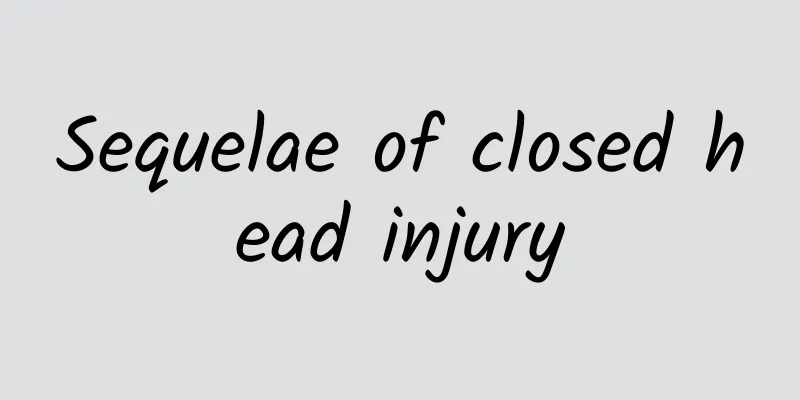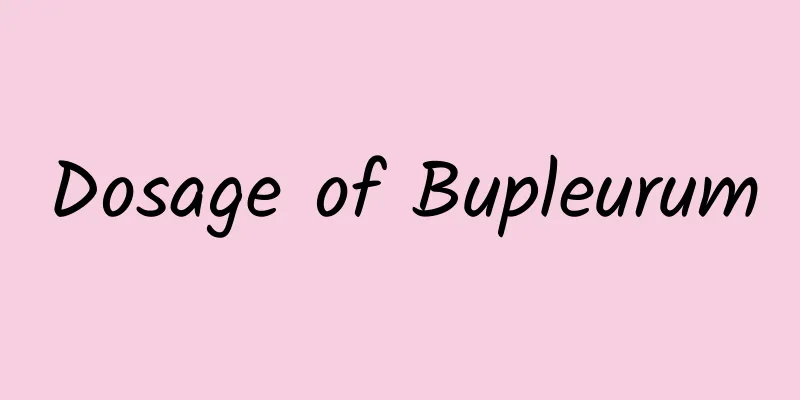Sequelae of closed head injury

|
If a person's brain is damaged, many nerves will also be damaged. The consequence of nerve damage is that the person's limbs connected to the brain nerves will lose control. This will cause the body and brain to lose connection. Some people with closed head injuries require surgery. However, brain damage will cause sequelae. Let’s take a look at the sequelae of closed head injury. Post-traumatic brain syndrome Symptoms such as headache, insomnia, memory loss, and fatigue may still exist several months after craniocerebral injury. Handling: ① Explain the work and psychological counseling patiently and carefully to eliminate concerns. ② Symptomatic treatment; ③ Encourage patients to participate in physical exercise appropriately and resume daily life and work. Intracranial hypotension syndrome Orthostatic headache and dizziness occur after craniocerebral injury. The diagnosis can be established if the intracranial pressure during lumbar puncture is <0.49 kPa (50 mmH20). Treatment: ① Lie flat or with the head down and feet high; ② Encourage the patient to drink plenty of water and intravenously supplement with balanced fluid or 5% glucose saline 3500-4000ml/d; ③ Lumbar puncture to inject 10-20ml of filtered air or oxygen, or 10-20ml of normal saline, once a day or every other day; ④ Intracranial hypotension caused by prolonged cerebrospinal fluid leakage should be repaired surgically. Carotid-cavernous fistula ① The diagnosis can be confirmed by the occurrence of exophthalmos, conjunctival congestion and edema, ocular movement disorders, intracranial bruits, and disappearance of the bruits caused by compression of the ipsilateral carotid artery. ② Cerebral angiography determines the extent of the lesion. Treatment: Intravascular interventional embolization therapy is the first choice for this disease, including detachable balloon embolization and microcoil embolization. When embolization therapy is ineffective, direct craniotomy can be considered, including electrocoagulation and transcavernous carotid artery repair. Traumatic cerebrospinal fluid leak After a skull base fracture, cerebrospinal fluid may leak out through the nasal cavity or ear canal. In the acute phase, there is often blood mixed in, and cerebrospinal fluid leakage increases significantly when the head is lowered. The following tests are helpful to clarify the diagnosis: ① Qualitative test of effluent sugar: a positive test means it is cerebrospinal fluid. ② When the transudate contains blood, the sugar content test is unreliable. You can use a dry gauze or absorbent paper to drop a few drops of the transudate. If there is liquid seeping out of the blood spots, it is cerebrospinal fluid. ③ Pneumocephalus may be seen on skull X-ray or CT scan. ④CT cisternography helps to identify the leak. Treatment: Most cases can heal on their own. If non-surgical treatment fails to heal the disease within 3 to 4 weeks, surgical treatment is required for cases with repeated leakage or complicated by purulent meningitis. Surgical method: Open the skull to find the damaged part of the dura mater and repair and suture it. If the cerebrospinal fluid leaks from the sphenoid sinus and needs to be repaired and sutured through the nasal sphenoid sinus, muscle covering can be used or a hole can be drilled at the tuberculum sellae to pack the muscle into the sphenoid sinus. Prolonged coma Currently, most scholars at home and abroad call a coma that lasts for more than one month after a craniocerebral injury a long-term coma. For patients with craniocerebral injury who remain in a coma for more than 6 to 12 months and appear in a decerebrate or decorticate state, but whose vital signs are stable and who have no definite effect after a series of brain resuscitation treatments, they may be considered to be in a vegetative state. However, they should still be actively treated to see the results. Treatment: ① Prevent and treat various complications. ②Terminate the use of phenytoin sodium and barbiturates. ③ Use brain cell activators as early as possible, such as ATP, coenzyme A, B vitamins, citicoline, gangliosides, naloxone, etc. ④Treatment with traditional Chinese medicine and acupuncture. ⑤ Let the patient listen to his favorite songs, conversations with relatives, etc. as early as possible. ⑥ Perform hyperbaric oxygen therapy as soon as possible, usually requiring more than 2 to 3 courses of treatment. Skull defect ① Indications for surgery: skull defect with a diameter of more than 3 cm, patients with a sense of insecurity and fear, obvious postural dizziness, headache and other skull defect syndromes or those with aesthetic problems. ② Contraindications to surgery: infection at the trauma site, intracranial hypertension, extensive scarring of the scalp at the defect site or poor blood supply, severe brain dysfunction, and long-term bedridden patients. ③ Timing of surgery: Generally 3 to 6 months after injury. If the wound has been infected, it should be repaired one year after the wound has healed. ④ Repair materials: Autologous or allogeneic bones, metal materials (such as titanium alloy), plexiglass or silicone rubber, etc. Traumatic epilepsy Focal or generalized seizures occur after a head injury. Electroencephalogram (EEG) examination is of great value in determining the diagnosis of epilepsy and the location of the lesion. Treatment: ① Patients who have developed epilepsy after craniocerebral injury should take regular anti-epileptic drugs, and the course of treatment is usually 1 to 3 years. Currently, commonly used anti-epileptic drugs in clinical practice include phenytoin sodium, sodium valproate, carbamazepine, etc. ② For patients who still have frequent epilepsy attacks after more than 2 to 3 years of regular drug treatment, surgical resection of epileptic foci and drug treatment can be considered. |
<<: What is chemical liver injury?
>>: What is the treatment for cold cough in adults?
Recommend
What stomach medicine can be taken long term?
As the saying goes, medicine is three-part poison...
Is hernia hereditary?
Hernia is a common symptom in life. It refers to ...
What are the rheumatism pain relief plasters?
Patients with rheumatic diseases are mainly treat...
How to treat bronchial pneumonia in children
How to treat bronchopneumonia in children? Becaus...
Why are hairy crabs bitter?
Usually, when buying hairy crabs, if they taste a...
What is the precursor of chest tightness and what are the causes of chest tightness?
Some people often experience chest tightness. Som...
Is it better to soak your feet and sweat slightly?
As people continue to pay more attention to healt...
What is the clinical significance of the four gastric function tests?
The human body is an inexhaustible treasure. Many...
What to do if the breast milk nipple is broken
Many families will hire a confinement nanny speci...
What to combine with Cuscuta auspiciousness
Cuscuta australis has appeared in many literary w...
Symptoms of diphtheria: sore throat is not a minor illness
Diphtheria is a respiratory infection that causes...
What causes yellow ears?
The ear is the organ that controls the hearing sy...
Orthodontic surgery procedure for adults
There are two main methods for adults to correct ...
How to lose weight after taking hormone drugs? What to do after taking hormone drugs
Many people need to use hormone drugs to alleviat...
What are the effects and functions of Erigeron chinense?
Erigeron chinensis is a wild herb that usually gr...









